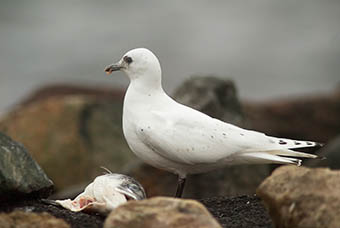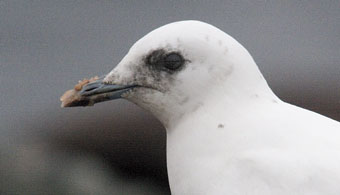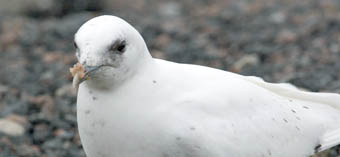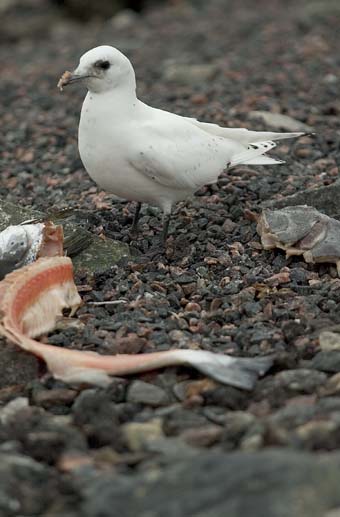



|
Maybe it’s our heathen predecessors.
Ivory Gull (Pagophila eburnea) in the Swedish town of
Lerkil,
just 10 miles south of Gothenburg on the western coast of
Sweden, photographed close to midday in the dim grey light of a
blowy and dark cold Fenno scandia - Tuesday, December 14. 2004.
On this cloudy day by the sea, one week before solstice, the
Gull itself was brighter than everything else in sight. Brighter
than the whites of the water, far brighter than all other birds
even brighter than the sky. Visible like an arrow of light as it
left the open sea rocks chasing a small boat, finally entering
the workspace of my 300 mm.
A white arrow of light. A phantom.
This bird is special.
Maybe it’s our heathen predecessors.
I have a friend who’s had the Ivory Gull typed into his cellular
phone for years anticipating what would be his, home-town
harbour, top future twitch of all dreams. I know of a guy who
has travelled all across most of the northern hemisphere. From
Svalbard over the Faeroe Islands and Greenland to northern
Canada trying to get even a glimpse of this bird of all
fantasies. The bird of the pack-ice.
Pagophila eburnea really is special to ornithologists. Special
to bird-watchers of all levels round here, and surely it has
been, if not the fuel, at least an important propellant agent,
to many, many trips planned or trips taken. "There just might be
Ivory Gull !" Its been said in cars, or "Maybe we will have
Ivory Gull" Like an omen. Mumbled between friends, You’ve heard
it where birders meet, during packing or where trips were
planned.
The bird is a myth. Living a hidden life. When a recent
published book says: "Total population 9,000 pairs maybe up to
25,000 pairs" (Malling Olsen and Larsson - Gulls of Europe,
Asia and North America – Helms Identification Guides) it
suggests that still nobody has the slightest idea of the size of
this worlds population, or even the whereabouts of Ivory Gulls,
And the next thing to happen is that it turns up in flesh and
blood, not in Denmark, but after all close enough in Lerkil less
than 50 miles from our coast.
Grateful we were.

|